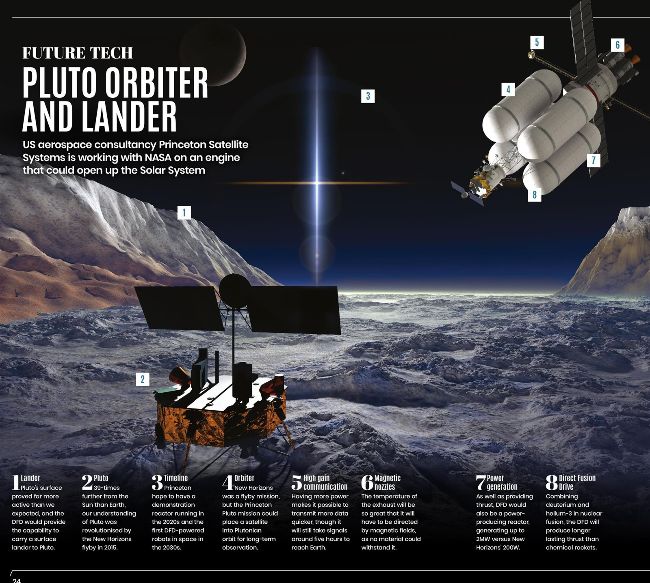FUTURE TECH
PLUTO ORBITER AND LANDER
US aerospace consultancy Princeton Satellite Systems is working with NASA on an engine that could open up the Solar System

We are used to the idea of hopping between planets or even star systems in fiction, but the real distances, even within our own Solar System, are difficult to comprehend. If we are to truly explore and settle in space we need a new form of propulsion, and a New Jersey-based company, Princeton Satellite Systems, has just received a NASA contract to work on the design of one: the Direct Fusion Drive (DFD). New Horizons was one of the fastest spacecraft ever launched, yet it took over nine years to reach Pluto. It pushed the limits of our capability and delivered its extraordinary data from a 400-kilogram (880-pound) craft with just 200 watts of power – that’s lighter than a grand piano and using less energy than a couple of light bulbs. This is because there is only so much energy available in chemical fuels, so space missions typically have a short sharp rocket burn at the start and then months or years of coasting as they have to go the slowest and most efficient route.